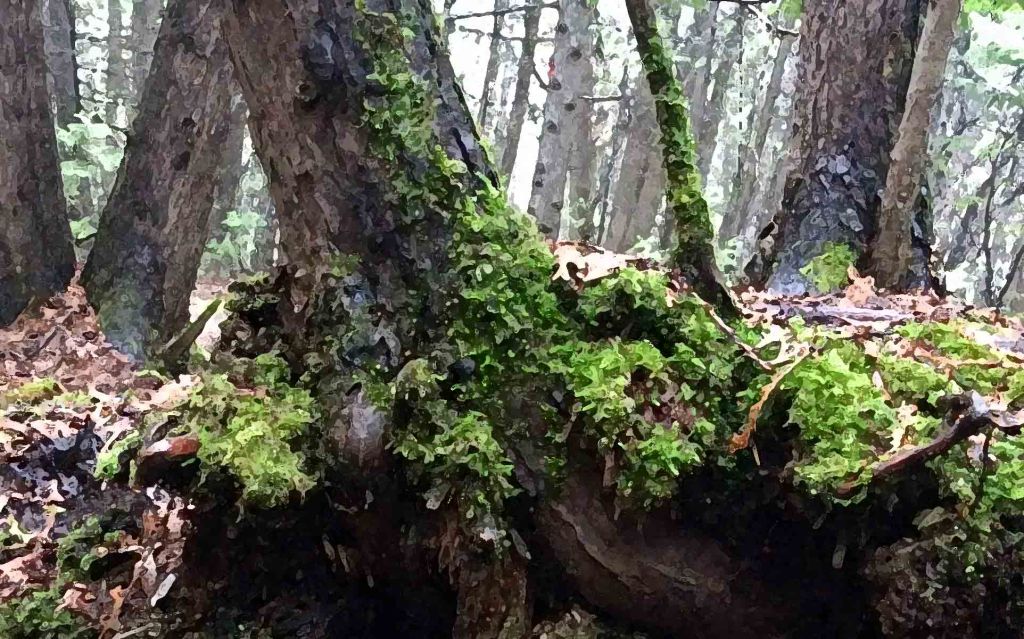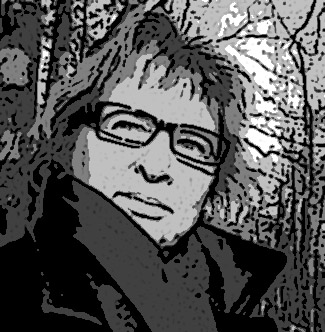In Life Is a Miracle, American conservationist Wendell Berry concluded that:
“we know enough of our own history by now to be aware that people exploit what they have merely concluded to be of value, but defend what they love.”
Wendell Berry
What we cherish, we protect.
Find something to love in Nature, and you can save the world. It’s really that simple. Cynics will consider this naïve. But at its root is the very notion that Itzak Stern argued in Schindler’s List when he quoted the Talmud: “whoever saves one life, saves the world entire.” Ecologists understand the foundation of this notion. Ecologists study relationships, after all. How animate and inanimate things interrelate in a web of existence and change. We are all connected. And because we are, any being can serve as a sentinel (a representative) of their functioning ecosystem and world. By saving one, you help save the whole. This is because every part of an ecosystem plays a role in that whole.
Robin Wall Kimmerer, author of Gathering Mossand Braiding Sweetgrass says it beautifully:
“In indigenous ways of knowing, it is understood that each living being has a particular role to play. Every being is endowed with certain gifts, its own intelligence, its own spirit, its own story. Our stories tell us that the creator gave these to us as original instructions. The foundation of education is to discover that gift within us and learn to use it well.
These gifts are also responsibilities, a way of caring for each other. Wood Thrush received the gift of song; it’s his responsibility to say the evening prayer. Maple received the gift of sweet sap and the coupled responsibility to share that gift in feeding the people at a hungry time of year. This is the web of reciprocity that the elders speak of, that which connects us all. I find no discord between this story of creation and my scientific training. This reciprocity is what I see all the time in studies of ecological communities. Sage has its duties, to draw up water to its leaves for the rabbits, to shelter the baby quail. Part of its responsibility is also to the people. Sage helps us clear our minds of ill thoughts, to carry our good thoughts upward. The roles of mosses are to clothe the rocks, purify the water, and soften the nests of birds…Traditional knowledge is rooted in intimacy with a local landscape where the land itself is the teacher.”
ROBIN WALL KIMMERER
Find Something To Love in Nature
Find one aspect of Nature that you love or that you find fascinating or that at least interests you in some way. It doesn’t matter what it is. A tree. A flower. An insect, mushroom, lichen, or mammal. Having chosen it, now you must study it thoroughly. This means not just looking at its structure or appearance; you need to study everything about it and its world; not only what keeps it alive and well but what it helps keep alive and well: its gift. Research its phenology, its life cycle, its habitat, what it eats and what eats it (that too is part of its being, its “gift”). No matter how small or humble, all things have a gift, even if that means “taking.”
If you picked a keystone species, this is an organism whose role touches many more aspects of a functioning ecosystem. Keystone species, by virtue of their role in an ecosystem—usually as an apex predator—play a major role in maintaining the ecosystem’s health and function.
Now that you’ve studied that wonderful being, what can you do to protect it?
Every Part Carries the Whole and the Whole Defines the Part
Nature is essentially fractal: every part carries the whole and the whole defines the part. This suggests why the wisdom of altruism, compassion, forgiveness and other acts of kindness are so prevalent in the universe.
From endosymbiosis in multicellular organisms to the selfless behaviour of the vervet monkey crier or the mutualistic behaviour of bottlenose dolphins with the fishermen of Laguna, Brazil, Nature has demonstrated amazing and heroic instances of cooperation and altruism. Scientists now argue that altruism is an ancient impulse and an empathic instinct; something more primitive than culture and, in fact, considerably more ancient than the human species itself. They posit that altruism is deeply innate, predating the phylogenetic split that occurred six million years ago.
Evolutionary biologist and microbiologist Lynn Margulis contends that evolution proceeds through cooperation, not competition: “Life did not take over the globe by combat, but by networking.” Examples of such networking, including interspecies cooperation, mutualism and altruism abound in Nature. Scientists have been demonstrating for years that cooperation among organisms and communities and acts of pure altruism (i.e., not reciprocal altruism or kin/group selection) are, in fact, more common in Nature than most of us realize.
Author of Empathic Civilization Jeremy Rifkin suggests that human nature is fundamentally empathic and cooperative rather than selfish and competitive. Evidence from brain science and child development studies show how selfishness, competition and aggression are not innate aspects of human behaviour but learned and culturally conditioned responses. Our very nature is far more caring, loving and empathic than we have been educated to believe. Rifkin suggests that we are witnessing the evolutionary emergence of Homo empathicus:
“We are at the cusp, I believe, of an epic shift into a climax global economy and a fundamental repositioning of human life on the planet. The ‘Age of Reason’ is being eclipsed by the ‘Age of Empathy’. The most important question facing humanity is this: Can we reach global empathy in time to avoid the collapse of civilization and save the Earth?”
JEREMY RIFKIN
After thousands of years of national and corporate empire-building we have reached a tipping point in planetary exploitation argues Elisabet Sahtouris, “where enmities are more expensive in all respects than friendly collaboration…It is high time for us to cross this tipping point into our global communal maturity—an integration of the economy and ecology we have put into conflict with each other, to evolve an ecosophy.”
“This world, in which we are born and taken our being, is alive. It is not our supply house and sewer; it is our larger body. The intelligence that evolved us from stardust and interconnects us with all beings is sufficient for the healing of our Earth community, if we but align with that purpose. Our true nature is far more ancient and encompassing than the separate self defined by habit and society. We are as intrinsic to our living world as the rivers and trees, woven of the same intricate flows of matter/energy and mind. Having evolved us into self-reflexive consciousness, the world can now know itself through us, behold its own majesty, tell its own stories–and also respond to its own suffering.”
JOANNA MACY and CHRIS JOHNSTONE, “Active Hope”

References
Bradley, Brenda. 1999. “Levels of Selection, Altruism, and Primate Behavior.” The Quarterly Review of Biology 74(2): 171–194.
De Waal, Frans. 2009. “Primates and Philosophers: How Morality Evolved.” Stephen Macedo and Josiah Ober (eds). Princeton University Press. 232 pp.
Goodall, Jane. 1990 “Through a Window: My Thirty Years with the Chimpanzees of Gombe.” Boston: Houghton Mifflin.
Kimmerer, Robin Wall. 2003. “Gathering Moss.” Oregon State University Press, Corvalis. 168pp.
Macy, Joanna and Chris Johnstone. 2012. “Active Hope: How to Face the Mess We’re in without Going Crazy.” New World Library, Novato, California. 288pp.
Manning, Aubrey. 2008. “Animal Magic: Why Species Give Each Other a Helping Hand (or Flipper)!” Daily Mail. Online: http://www. dailymail.co.uk/news/article-533571/Animal-magic-Why-species-helping-hand-flipper.html
Munteanu, Nina. 2016. “Water Is…The Meaning of Water.” Pixl Press, Vancouver, B.C. 586pp.
Munteanu, Nina. 2019. “The Ecology of Story: World as Character.” Pixl Press, Vancouver. 198pp.
Rifkin, Jeremy. 2009. “The Empathic Civilization.” Penguin/Tarcher, New York, NY. 688 pp.
Sahtouris, Elisabet. 2014. “Ecosophy: Nature’s Guide to a Better World.” Kosmos, Spring/Summer 2014: 4–9.
Richards, Rebekah. 2007 (2010). In: Nina Munteanu (author), “What Altruism in Animals Can Teach Us about Ourselves.” The Alien Next Door. Online: http://sfgirl-thealiennextdoor.blogspot.ca/2010/06/ what-altruism-in-animals-can-teach-us.html
Wahl, Daniel Christian. 2017. “Collaboration and empathy as evolutionary success stories.” Medium.com, February 26, 2017.
Warneken, F. and Tomasello, M. 2006. “Altruistic Helping in Human Infants and Young Chimpanzees.” Science 311: 1301–1303.
Warneken, F., B. Hare, A.P. Melis, D. Hanus, and M. Tomasello. 2007. “Spontaneous Altruism by Chimpanzees and Young Children.” PloS Biology 5(7): e184.

Nina Munteanu is a Canadian ecologist / limnologist and novelist. She is co-editor of Europa SF and currently teaches writing courses at George Brown College and the University of Toronto. Visit www.ninamunteanu.ca for the latest on her books. Nina’s bilingual “La natura dell’acqua / The Way of Water” was published by Mincione Edizioni in Rome. Her non-fiction book “Water Is…” by Pixl Press(Vancouver) was selected by Margaret Atwood in the New York Times ‘Year in Reading’ and was chosen as the 2017 Summer Read by Water Canada. Her novel “A Diary in the Age of Water” was released by Inanna Publications (Toronto) in June 2020.





Finding relationship is finding meaning …
LikeLiked by 1 person
Astutely said, Merridy… Thank you.
Nina
LikeLike